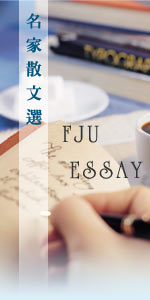| This
site is designed to provide readers with essays written by
established writers and reading supports that may help readers
learn how to appreciate the genre of essay.
The
essays are classified by mode, theme, and author. There are
ten modes (or rhetorical patterns) in our site:
- description
- narration
- illustration
- classification
- comparison and
contrast
- cause and effect
- process
- definition
- argumentation
- analogy
Each mode comes
with an introduction that is illustrated in both text and
PowerPoint formats. In addition, every mode has at least 5
essays so that readers may understand a rhetorical pattern
by studying different essays of the same mode. All of the
essays are also categorized into themes such as education,
gender issues, growth and heritage, man and nature, relationships,
etc. These essays may also be accessed by using the authors'
names when readers forget the essay titles.
Reading
supports include reading room materials, multimedia materials,
handouts, and interactive templates. The materials provided
in the reading room are categorized into:
- About the author
- links to author biographies
- Relevant link
- links to free On-line sample term papers, our students'
annotations or journals, model annotations provided by teachers
of Fu Jen Catholic University, etc.,
- Cultural notes
- links to our explanations of the cultural information
embedded in the essays,
- Questions for
response/analysis - Questions that we have prepared to help
readers read critically.
Multimedia materials
include:
- Audio aids -
audio clips in MP3 format that present our precious expert
readers' reading of some essays,
- Visual aids
- images that may illustrate the texts, PowerPoint presentations,
etc.
Our handouts are
concept maps, worksheets for outlining, visual organizers,
and printer-friendly version of each text.
To
help our readers actively read, we provide dictionary search
functions, the annotation writing interface, and the journal writing
template. Readers may use two ways to look up new words. One
is to double click a new word to bring up Prof. Yen's bilingual
dictionary; the other, to enter the new word in the dicitonary
search box on the submenu that accompanies each essay. In
the writing room, a reader may check out either the annotation
writinginterface or the journal writinginterface. Here is
how the two templates may work:
After
selecting the Annotation tab that accompanies an essay, the
reader may see that on the right of each paragraph of the
essay, there is a Take Note button. Clicking on the button
brings up the annotation template which has a quote form field
and an annotation form area. In the quote form field, the
reader may cite an expression or a passage from the essay.
In the annotation form area, the reader may key in any sort
of reading response. The reader may take as many notes as
s/he likes. All of his/her notes on the same essay will be
presented on a web page that has two columns. In the left
colum is the text of the essay, and in the right, the reader's
annotations arranged paragraph by paragraph.
If
the reader is prepared to compose a journal on the essay,
he may select the Journal tab in the writing room to bring
up the journal writing template. This template will then take
the reader to do brainstorming first, writing the journal
next, and finally writing up a title for his/her journal.
In addition, every reader is given the opportunity to compose
3 drafts.
The
annotations and journals are managed for the purpose of self-regulation
and peer learning. Each entry of the annotations is marked
with its submission date and time, so is every draft of the
journals. The submission record may help learners to keep
track of the status of their assignments. To help promote
peer learning, annotations and journals may be open for all
members to browse when the administrator makes links in the
Relevant Links area. Otherwise, they are kept accessible by
the notetakers and journal writers themselves.
|

